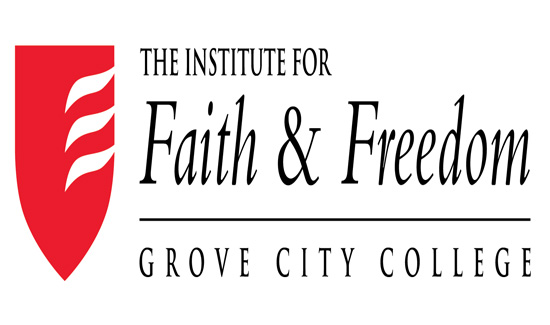Allegheny Institute: The Pathetic State of the Pittsburgh Public School District
Problems for the Pittsburgh Public School District continue to mount. For the current school year enrollment is 26,649, declining more than 1,600 students from the previous year. Moreover, the District recently issued a forecast indicating that its high school enrollment would drop from just over 8,000 to about 6,000 by 2014, a further decline of 25 percent. Compounding the District’s problems is a report of higher than normal absenteeism among its faculty.
Instead of instituting meaningful reforms that have a chance of turning the Pittsburgh Public Schools around, the District plans to launch a recruitment campaign for younger students. The District apparently believes parents of young children can be impressed with what Pittsburgh Schools have to offer and believe a recruitment campaign targeting the parents of children in kindergarten and pre-school will be the remedy. The problem might be that these parents are all too aware of what the District has to offer—poor academic performance.
The president of the school board is confident the Pittsburgh Promise scholarship program will help reverse the sliding enrollment figures. To help spread the word of the Promise, the District has sent out mailers to families whose children do not attend Pittsburgh Public Schools touting the benefits of the program. As we wrote in an earlier Policy Brief (Vol., 8, No.69), the Promise, now two years old and having issued its first scholarships, has yet to deliver on the assertions it would reverse the enrollment trend or lead to improved academic performance. In fact, since the program was launched in late 2006, enrollment has dropped by more than 4,000 students.
Furthermore, as we pointed out, the Promise has also not raised academic achievement among its students. Latest scores on the state achievement test revealed that only 53 percent of 11th grade students scored at the proficient level on state reading levels and only 44 percent scored at grade level in math. At many of the District’s high schools the fraction of 11th grade students reaching proficiency struggles to reach 20 percent—hardly the material the District will put on recruitment posters, but certainly information that will scare off parents of prospective students.
The District claims it is losing students to charter schools and to suburban districts. To combat this problem, they will also work on making the schools more customer friendly by sending clerical employees to customer-service training seminars and creating a welcoming environment for visitors in District buildings. They haven’t released a cost projection for these projects, but this is an unnecessary expense for the cash-strapped District. It’s very doubtful that many parents of school-aged children would be willing to look past poor academic performance to improved customer service as a reason to enroll their children in Pittsburgh Public Schools.
The District is concerned that the drop in enrollment will cause overstaffing as a falling student count will leave them with excess teachers. That is a problem because getting rid of teachers even with declining enrollment is very difficult. And the state will not reduce its funding just because enrollment is down. That policy epitomizes all that is wrong with government financed and managed education.
Adding to the public relations woes of the District is a recent report showing that 6.5 percent of teachers call in sick on Fridays. By contrast, the national average call out sick rate for Fridays was only 2.3 percent in 2007 making Pittsburgh Public School teachers nearly three times as likely to call in sick as the national rate. Worse still, the absenteeism report revealed the highest rate to be on a Tuesday after a Monday night Steelers’ game. State and local taxpayers are shelling out $5 million for the abuse of sick leave policy. What kind of example are these teachers setting for their students?
To compound the negative image the call out rate creates, the union defends the heavy absenteeism by noting the teachers don’t get vacation days. This defense qualifies for the award as the most pathetic rationale ever dreamed up. Teachers work 190 days a year compared to the 240 or more that most people put in. Moreover, they are eligible for twelve sick days and two personal days during the year. Sick days not taken accumulate and are paid out in a lump sum at retirement. Teachers do not work most holidays when school is not in session. Then of course they are off much of June, July and most of August. And they get pay and fringe benefits as if they were full time, 250 day-a-year workers.
This absenteeism behavior and the defense offered for it, along with the right to strike, the work rules and the virtual impossibility of firing a teacher for inadequate performance combine to create a workplace disaster from a management and taxpayer point of view.
Unfortunately, Pittsburgh’s school board is equally complicit in the dysfunctional situation. One school board member offered the excuse that some teachers might be "burned out" or "frustrated" or alternatively the absentee problem could reflect an administration problem. Board member excuses for excessive teacher absenteeism reflects a District that is probably beyond repair let alone improvement—all this for a mere $20,000 in annual expenditures per student.
Dramatically falling enrollment and chronic high teacher absenteeism are just two of the hallmarks of a district in dire straits. Parents who care about their children’s education can see very clearly what the true picture is and they will want better for their children. Taxpayers should demand better returns for their expenditures. The problem is that the situation in Pittsburgh schools has been bad for so long that the Board and the teachers are not even embarrassed by these latest revelations and others regarding poor test scores.
On the other hand, Mayoral and Council candidates who are serious about changes that will slow the outflow of people and tax base from the City should address the awful condition of the school district. The people of Pittsburgh deserve better.
________________________________________
Frank Gamrat, Ph.D., Sr. Research Assoc. Jake Haulk, Ph.D., President
________________________________________
Please visit our blog at alleghenyinstitute.org/blog.
If you have enjoyed reading this Policy Brief and would like to send it to a friend, please feel free to forward it to them.
For more information on this and other topics, please visit our website: alleghenyinstitute.org
If you wish to support our efforts please consider becoming a donor to the Allegheny Institute. The Allegheny Institute is a 501(c)(3) non-profit organization and all contributions are tax deductible. Please mail your contribution to:
The Allegheny Institute
305 Mt. Lebanon Boulevard
Suite 208
Pittsburgh, PA 15234
Thank you for your support.




